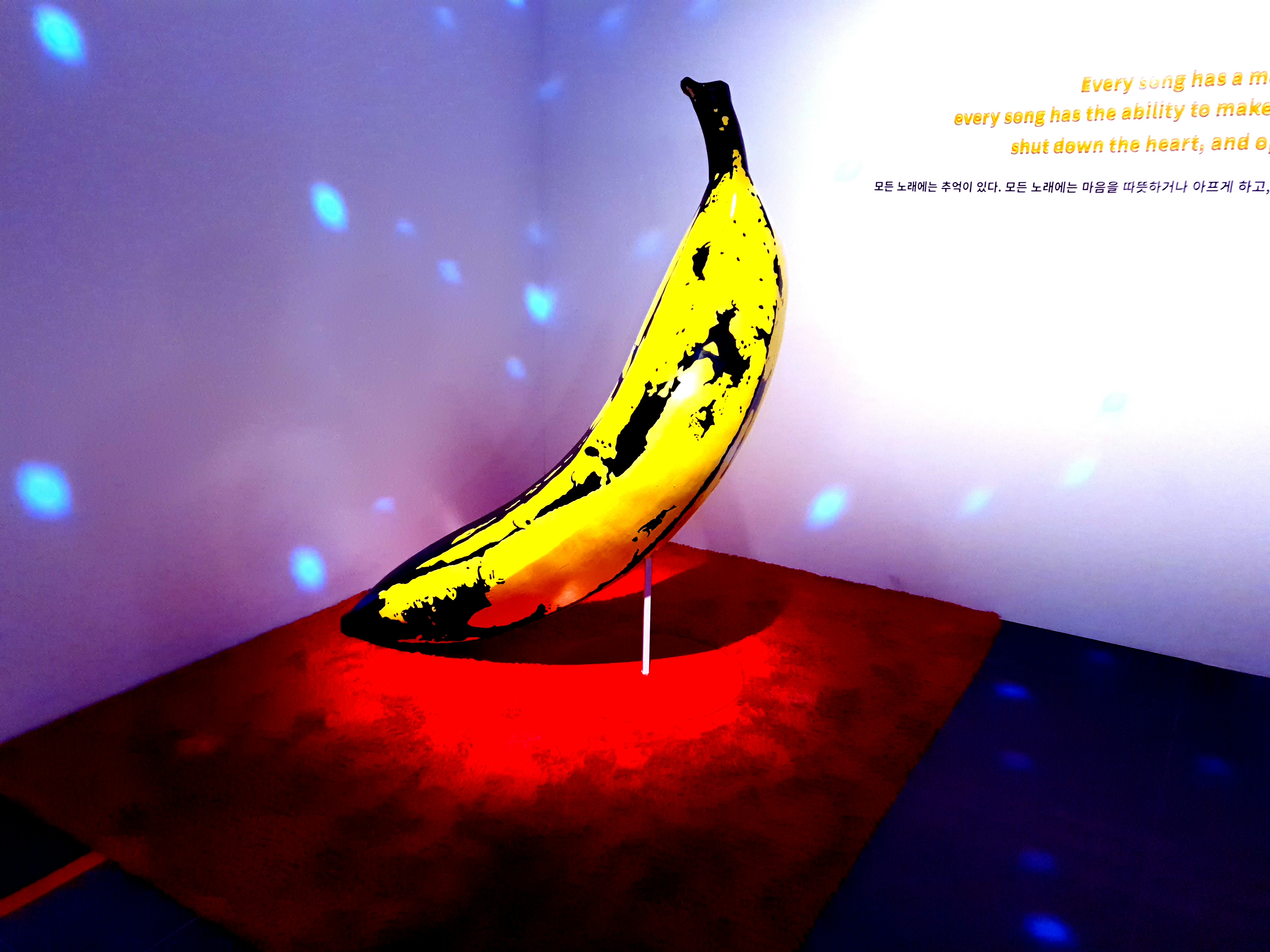
Artists with a discerning eye for their generation become icons who transcend time, looming over us in many forms. After a tour of major art galleries throughout Italy, the Andy Warhol: Beginning Seoul large-scale retrospective exhibition came to Korea for the first time on February 26, an event that promises to link our two eras together in a new way. Famously recognized as the master of pop art, Andy Warhol aroused public interest in art and everyday experiences, leaving us with the phrase, “Art is anything you can get away with.” His work which brought him fame from the mid-20th century onward led the art world to reckon with a total reversal away from the authoritative power of traditional art. The artist’s involvement had always been considered an important aspect of art, yet it’s difficult to find any traces of it in Warhol’s work. His best-known works mirror the contemporary rise of consumerism and mass production by reproducing common, everyday images through silkscreen printing, intentionally removing any possibility of interference by the artist. Warhol’s earlier experience as a successful commercial artist is said to have greatly contributed to his artistic approach, which was very different from other methods of the time.
Warhol, who had thirsted for fame since childhood, started out as a designer.
He found success as a leading commercial artist while working closely with renowned brands like Vogue, Glamour and Tiffany & Co. before starting his pursuit for recognition as a creator of fine art.
It’s only natural, then, that there is something unique about the subjects he chose and the way in which he portrayed them. Warhol borrowed everyday subject matter—Hollywood stars, common supermarket items like cans, wrappers, cola bottles, and money—and turned it into works of art that take a critical look at society.
There’s a major difference between going about your day without thinking about it, and looking at it with a critical eye.
Warhol did not select the subjects of his work simply to show a record of the products or the people themselves, but to comment on the overall landscape of the era and its society through common objects and people with which everyone is familiar.
The paradigm shift accelerated by his work gave rise to numerous philosophies around art; at the time, American art critic Arthur Danto remarked that the change spelled an end to the grip that traditional authority had had on the art world.
It’s clear as well that this point of view, which embraces the way art changes to fit each evolving generation, persists with us today.
With our contemporary attitude for keeping an open mind toward works with new styles and forms, we should have no problem appreciating the works of Andy Warhol on display at this recently opened exhibit.
Entering the exhibit, the sudden change in surrounding is complimented by deep music, giving the impression of entering a party.
This is a clever nod to Warhol’s Factory, where he routinely hosted parties.
Divided into six sections by theme and format, the exhibition hall, with strong contrast between the interior lighting and the intense colors in the artwork, fosters a space that allows visitors to focus on just the kind of pop art they would hope to see at an Andy Warhol exhibit. In addition to his widely recognized silkscreens, the exhibit also provides a sweeping look at other works by Warhol, including his drawings and objets d’art. With photo zones scattered among the artwork, Warhol’s world will comfortably remain in both visitors’ photos and minds as more than just memories of what they saw, but of what they experienced. Just as Warhol extolled both the fleeting and eternal nature of photography, these visitors’ photos will capture the moment when they visit the exhibition and become the main characters for their 15 minutes of fame. Likewise, as time goes by, and we return again to our daily lives … When that time comes, we will naturally see the aesthetic experience we escaped into as one more part of our normal lives. Just like Andy Warhol did.
-
 © Lee Jangro
© Lee Jangro
POP ART
First used by English art critic Lawrence Alloway to denote popular art. In art history, it points to a trend that mainly appeared in mid-20th century England and US of art that was openly receptive to the zeitgeist and environment of the time. English and American pop art are somewhat distinctive given their timelines and respective artists, but both are said to have narrowed the gap between traditional art aesthetic and popular culture by adopting imagery from media and advertising for use in the “high” arts.
Unauthorized reproduction and distribution prohibited.